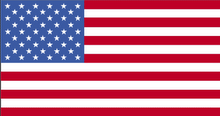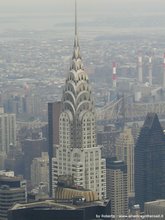 Spreading a net in Dad Horse Bay, you never know what. Photographs by Ava Chin for The New York Times
Spreading a net in Dad Horse Bay, you never know what. Photographs by Ava Chin for The New York Times “They don’t call it Dead Horse Bay for nothing,” said Jarad Astin, walking across the bottle-strewn beach in flip-flops with a seine net over his shoulder.
We were there for BioBlitz , a 24-hour survey of Jamaica Bay on June 11 and 12 by scientists, professors, amateur naturalists and families. The goal of the field study, sponsored by Brooklyn College and the National Park Service, was to collect and identify as many species of animal, plant and marine life as possible. Our group, one of many working throughout the area, was attempting an accurate assessment of marine creatures, but at the beach of Dead Horse Bay, near Gerritsen Inlet, all we saw were discarded wine, juice and syrup bottles, mugs, film reels and other assorted trash.
The three of us — Tumpa Mira and Beni Mfitidi, two Brooklyn College juniors, and me — marveled at the former landfill as we followed Mr. Astin, our leader and the live animal coordinator for the Brooklyn Children’s Museum.
Under Mr. Astin’s direction, Ms. Mira disappeared with a dragnet toward a patch of water-grown grasses, while Ms. Mfitidi helped him unroll the 25-foot-long seine net.
“It’s like standing on a mattress,” Mr. Astin said, making his way thigh-deep into the waters of Dead Horse Bay, holding one end of the net, while Ms. Mfitidi held the other.
“O.K., hold it nice and tight,” Mr. Astin instructed. “Ready? 1, 2, 3 — go, go, go!”
They dragged the net toward the shore, and in a final scooping motion, lifted it out of the water. The first attempts brought up only seaweed, but on the third try, there were bits of comb jelly, a few mud snails and several tiny Atlantic silversides in the net.
I fished out a piece of sea lettuce (a k a Ulva lactuca) about the size of a square of origami paper, floating in the water like a piece of green cellophane. “Is this edible?” I asked.
“Most kelp and seaweed is edible,” Mr. Astin said. “But you wouldn’t want to consume any from around here.”
Jamaica Bay houses four wastewater treatment sites, and the Department of Environmental Protection is working to improve the ecology, according to agency officials, by initiating measures to cut nitrogen-discharge levels and increasing the number of water- sampling sites. Still, the combination of pollution, the proximity to Kennedy Airport and the fact that we were on former landfill made the eating prospects unattractive.
I headed down the beach to where Ms. Mira stood with a dragnet in a grassy estuary, knee-deep in water. Earlier, Mr. Astin had shown us how to bring up samples from the bay floor using arm motions like an Olympic curler’s, which I tried to mimic with my own net. Ms. Mira caught several slippery Mummichogs (minnows), but I was bringing up only sea lettuce and mud snails.
Suddenly, through the water, I saw the scrambling motion of a small crab near my waders and nabbed it with my net.
I was worried it was an Asian shore crab — the wildly successful invasive, of which we didn’t need a living specimen. But to my delight, back on shore, Mr. Astin confirmed it was a female European green crab, or Carcinus maenas (also nonnative and invasive), which he did want. She was about the size of a silver dollar and blowing bubbles in his hands.
Half an hour later we regrouped, marveling at a horseshoe crab Mr. Astin had found crawling around the water’s edge. “This one’s in pretty good condition,” he said, holding up Limulus polyphemus as it made slow crawling motions in the air. Ms. Mira and Ms. Mfitidi wanted to know if it could bite.
“It can’t hurt you,” Mr. Astin said, noting the knot of barnacles on its hard shell before turning it over. A handful of slipper limpets (Crepidula fornicata) lined the bottom. “These are hitchhikers,” he said, prying off the limpets with a knife, revealing their yellow eggs.
Before we started packing up, Mr. Astin made one last survey of the bay’s grassy area with his dragnet. “Whoa, look at this,” he said, suddenly pulling his net out of the water.
He held out a large blue crab, with a single pincher waving in the air . “He’s lucky I’m not crabbing,” Mr. Astin said, as we admired it. “He’s big enough to be a keeper.”
He showed us the crab’s dorsal side, and the rather phallic apron- flap, shaped like an upside-down T (a male), before tossing it into the water.
Suddenly, something jerked in the net, and Mr. Astin fished out another, much smaller, crab. Turning it over revealed the triangular-shaped apron of an immature female. “I think we broke up a couple — sorry, guys,” Mr. Astin said.
By the end of the morning expedition, we counted silversides, killifish , amphipods (the roly-polies of the sea), tiny Atlantic herring, fairy shrimp, mud snails, common periwinkles, a hermit crab, pipe fish (related to seahorses, but elongated like inchworms) and my European green crab, among others. Our total was 42 species.
Each BioBlitz helps the Park Service discover species of animals, plants, fungi and marine life, but while we found nothing unusual that day, it seemed enough to contribute an accurate assessment for the survey.
In our small tank filled with living specimens — including feathery barnacles waving come-hither like slow-moving showgirls, and fairy shrimp treading water — I watched my scrappy green crab trying to eat its neighbors. It seemed particularly keen on nabbing one of Ms. Mira’s minnows. If it survived the weekend and quarantine, it would become a part of the Children’s Museum.
When all the species are tallied, experts at Jamaica Bay expect to have counted nearly 600 from the BioBlitz.
No dead horses, but lots of other stuff.





















































